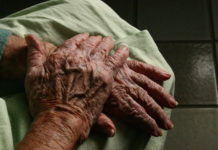The human body is rife with amazing details many people overlook or don’t know about. One such detail, surprisingly enough, might be a built-in way to help forensics experts find a killer.
According to Science News, this studied observed the changes that happened to the human body immediately after death. One important fact to note is that, rather than simply being some sort of “off switch”, death does not automatically shut down the entirety of the body.
Changes within the body continue to happen after death up 24 hours after a person dies. Genetic changes especially after of note here, being what the researchers were most focused on observing.
Unlike what many assumed, it was found that not only DNA but RNA continued to function for some time after death, with some new genes even being transcribed within the dead body. Essentially, these processes continue until the necessary materials are no longer available.
Centre for Genomic Regulation geneticist and study leader Roderic Guigó says that he and his team are hoping to one day discover exactly how long after death different genes can be transcribed. When beginning the study, they used 36 different kinds of tissues from around 500 donors, all of which had been dead for a maximum of 29 hours. Though initially hoping to see what kinds of differences living and dead tissues might have from each other, they shifted their focus after identifying a pattern.
This pattern pertained to estimating a person’s time of death, which they found they were able to do provided they had four different kinds of tissues, those being: Lung, thyroid, subcutaneous fat, and skin that had been exposed to the sun. Combining the different information gathered from those four sources, they devised an algorithm that could accurately predict the time of death within approximately nine minutes, with results becoming even closer the fresher the corpse is.
While it might not be as easy to find everything in such a neat order in real world examples of dead bodies, refining this method of time of death identification could drastically improve the accuracy of forensic science. Microbial ecologist Jennifer DeBruyn of the University of Tennessee, who was not part of the study but had been following it, also suggests utilizing these new techniques in conjunction with another cutting edge method involving changes in microbiology.
So far, the only major hurdle for the team is accounting for different conditions the body might be exposed after death, though they hope to find a solution soon.





